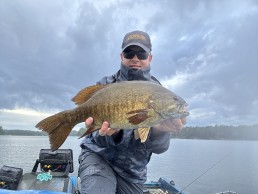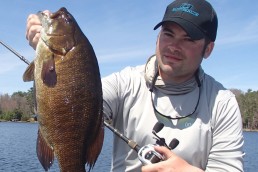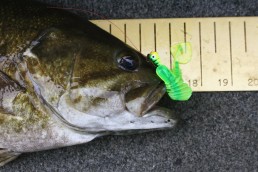Smallmouths Gone Afoul in Cold Front Conditions
SHARE THIS POST
Cold fronts are déjà-vu, and frequent. During a typical fishing season, two or three days of stable weather per week always seem to be followed by an equal amount of cool, breezy, bluebird days.
Most of these post-front days occur under the worst possible timing: at the beginning of a highly anticipated fishing trip where hot bites are taking place.
Untimely cold fronts deliver wind shifts, barometric pressure changes, clearing skies and bitterly cold air temperatures. Any combination will result in changes in bass behavior.
It’s possible to counter cold fronts, but it’s very difficult. Specific fishing styles and uncanny strategies seem to excel when things take a turn for the worst. Anglers able to force themselves to abandon yesterday’s hot pre-frontal fishing pattern and figure out a new one will catch fish. And anglers failing to adjust ultimately struggle.
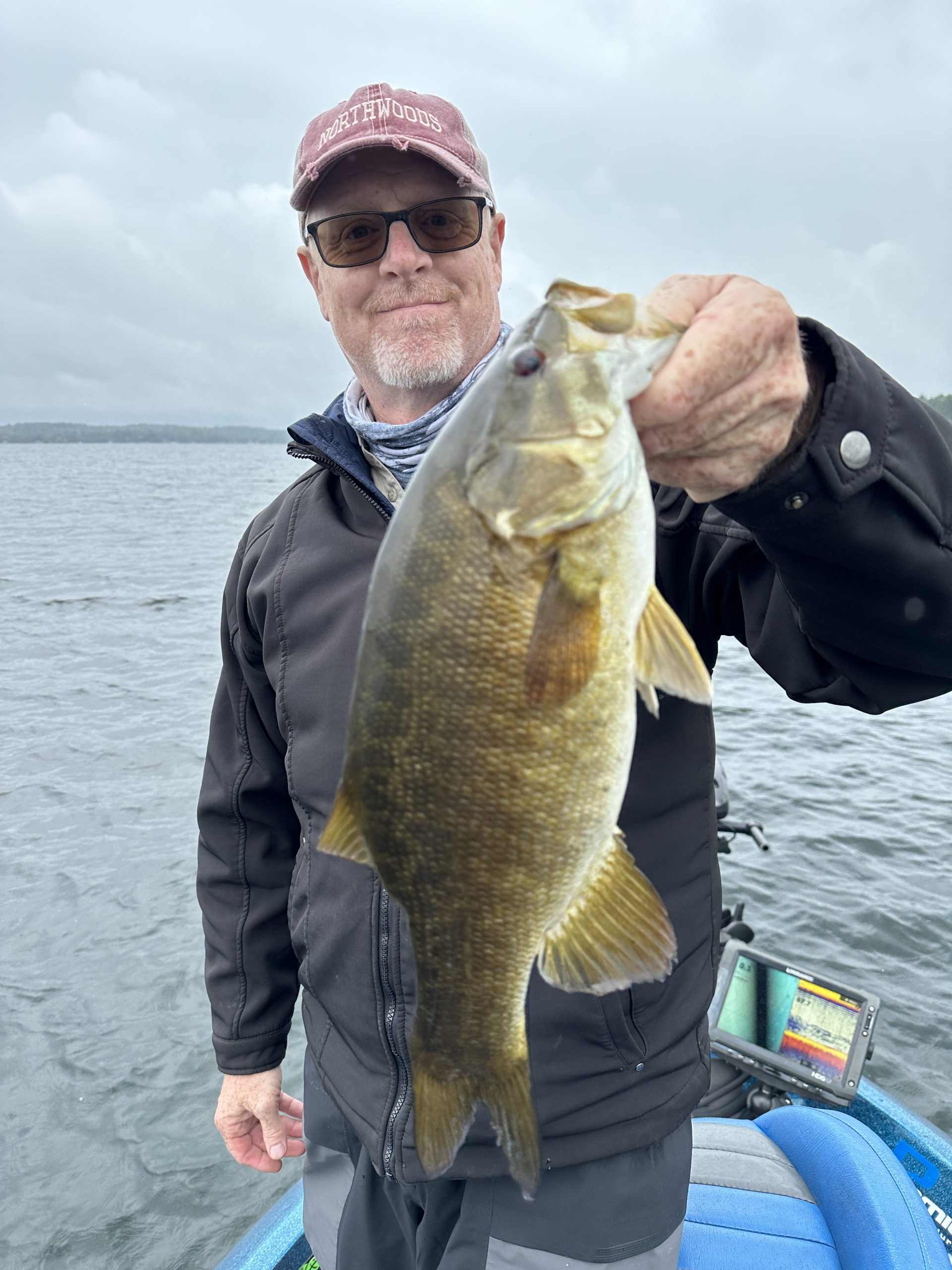
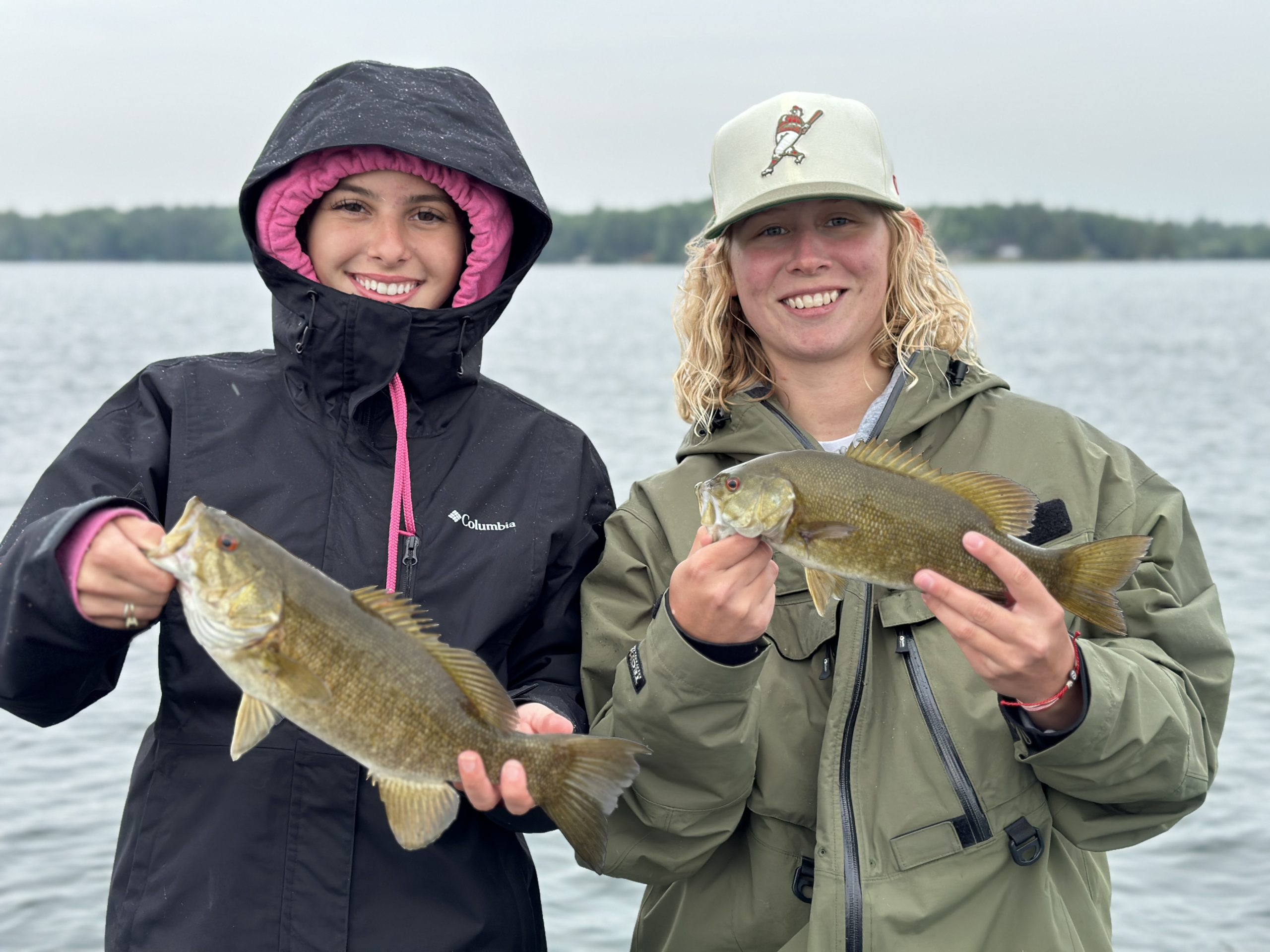
Many anglers fall into these traps. Last September, we had a run of 5 consecutive good days of guiding in which clients were catching 4- and 5-pound smallmouths on paddletails, with multiple big fish per day. The steady fishing expired during the middle of a trip the next day, upon the arrival of cold, northwest winds that blew out the humidity. We continued working the same pattern despite the cold front and couldn’t produce bites for several hours. We finally found fish again by switching lakes and finding them buried alongside walls of milfoil, extracting them with swim jigs and weedless drop-shot rigs despite the very small strike zones. My two customers were visibly upset by this change in conditions, our newfound strategies, unwilling to adapt to my program, and how they should have been here the other day.
Weather trumps everything. It is the single most important variable in fishing, influencing and controlling all lake and underwater activity. We can’t control the moods of fish, but we can trigger responses.
Remember that you don’t suck at fishing; the fish suck at eating your bait.
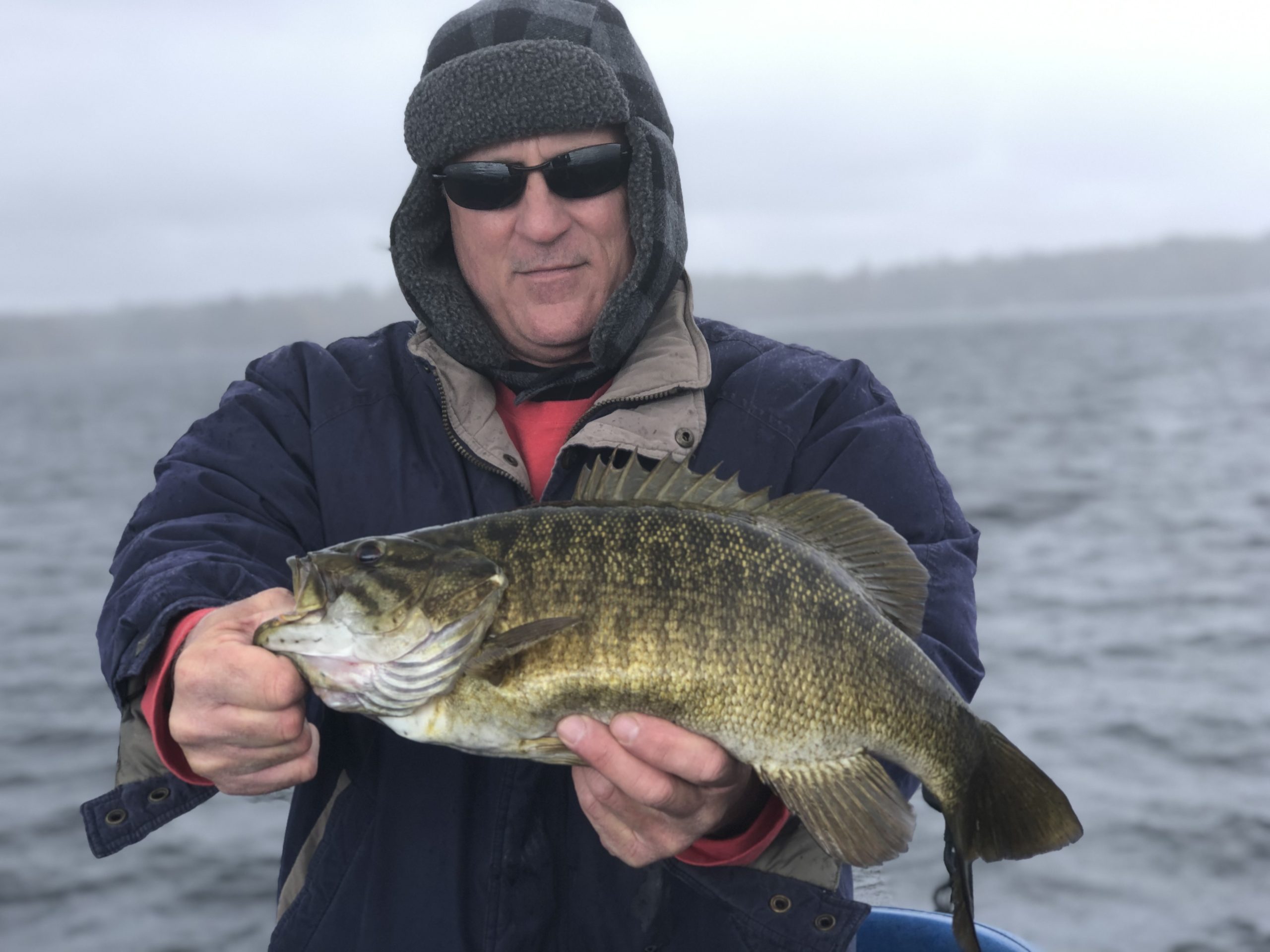
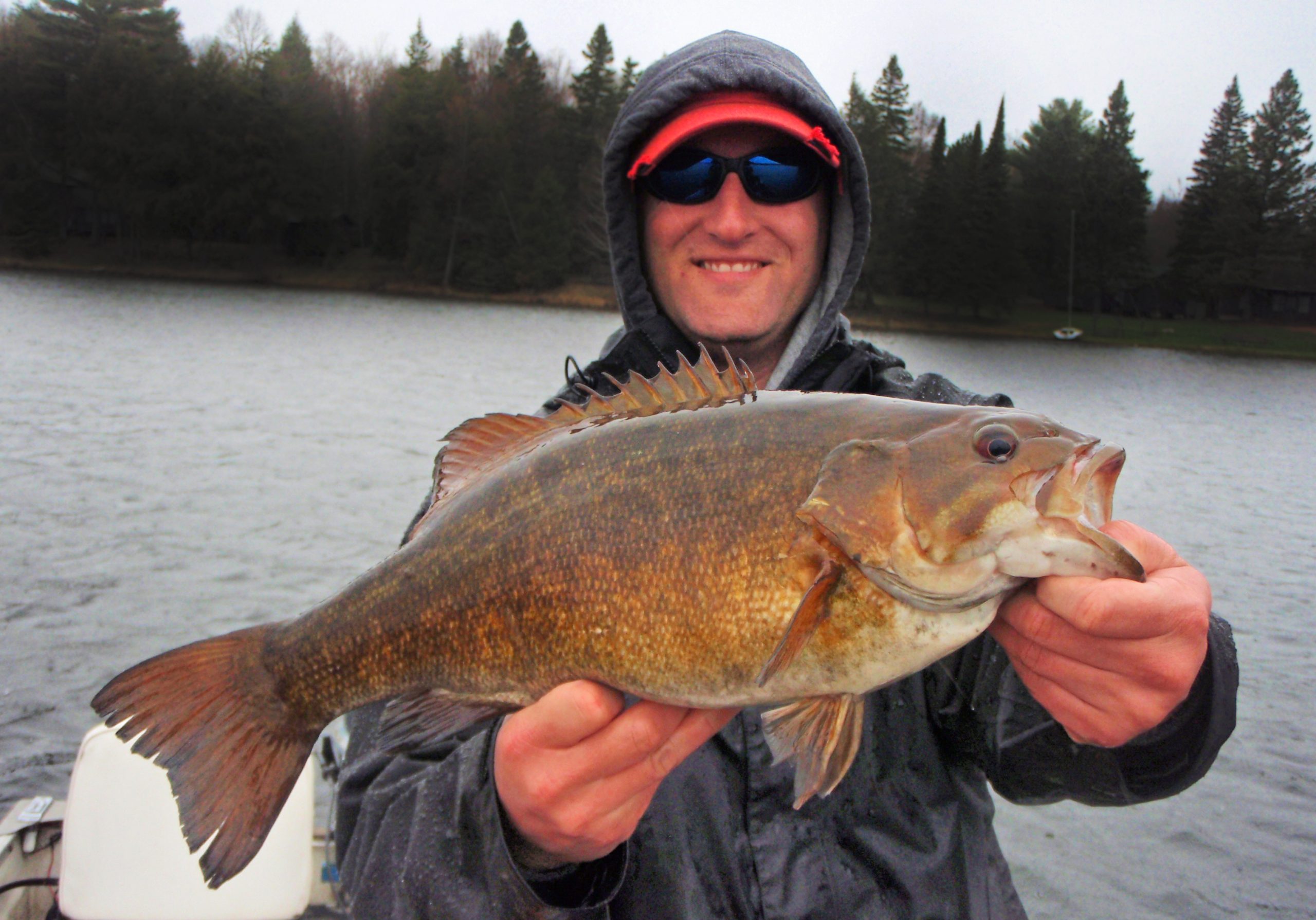
Cold fronts and smallmouth behavior
All weather conditions affect bass behavior and activity levels. Bass have acute senses about the weather, detecting sudden changes. Their swim bladders and sensory organs drastically react to passing fronts and pressure changes. Fish instinctively display positive and negative reactions to changes in weather depending on its severity. For every weather pattern, bass always display a positive or negative reaction in response. The effects of cold fronts negatively impact smallmouths and catching them becomes challenging.
Cold fronts are frontal passages containing cold, dry air that pushes out warm, humid air. As weather systems travel across North America, and seasons change, the atmosphere is attempting to reach equilibrium between the warm, stable, humid air and cold, unsettled air.
Their passage changes every biological and environmental aspect of a lake and river, including water temperature and clarity, light intensity, wind speed and direction. These variables (and many more) combine to negatively affect fish activity levels and behaviors.
What’s to blame for the poor fishing that ensues? Smallmouths are far more sensitive creatures than you’ve perceived them to be. In my opinion, they are more temperamental than walleyes during these events. They are helpless victims of weather changes.
Smallmouths are cold-blooded animals; their energy levels and metabolism are controlled by their environment. When temperatures cool, they’ll react and respond with greatly delayed reactions.
Smallmouths use weather changes as cues for feeding opportunities because they will greatly decline as cold fronts pass. They feed most often when odds are in their favor. As the atmosphere recovers, fish eventually recover, too. Sometimes it takes only a day or two, while in extreme cases, up to a week or more. Wisely, they’ll sit and wait it out for their environments to improve.
Smallmouth speakeasies and hideouts
Most anglers have difficulty putting together strategies to counter cold fronts. However conflicting, there isn’t a right or wrong lake to fish at this time due to the difficulty of fishing.
If smallmouths were caught from a specific area prior to the front, the expectation is they didn’t retreat too far away. They’ve sought out the protection from nearby cover, or sanctuary on deep structure, waiting for the front to pass through.
I’ll altogether avoid featureless lakes lacking hideouts and cover. We’ve stubbornly spent so many days on these lake types with fewer results, kicking ourselves. Instead, I seek shallower, fertile lakes with weed and wood cover. Smallmouths utilize their protection offered.
Milfoil—Throughout the North, many smallmouth fisheries are becoming infected with invasive and junk weed species. Milfoil is among the best form of protection that smallmouths enjoy. Where dense, near-shore pockets and weed lines are available, smallmouths can be found stacked up against this cover.
Smallmouths utilizing these temporary hideouts are very catchable. Penetrating through and fishing tightly to them enhances catch rates.
Are you enjoying this post?
You can be among the first to get the latest info on where to go, what to use and how to use it!
Baits that can hang in the strike zone are crucial. Finesse anglers can effectively work the edges of milfoil with Ned Rigs such as Z-Man TRD’s on 1/16- and 3/32-ounce heads. The same can also be done effectively with marabou hair jigs and weightless, 4-inch wacky worms. Each of these options descends slowly downward, offering smallmouths extra time to decide whether to pursue them or not.
On the other hand, power anglers fishing milfoil have options as well. My boat commonly enjoys ripping paddletails, lipless crankbaits and perch-pattern swim jigs through weed pockets, openings and edges. These methods trigger reaction strikes, and commonly produce a wild ruckus of other species: muskies, big walleyes, pike and largemouths buried in the same weed cover.
Further effective strategies are suspending jerkbaits and fluke-style minnows. Long-pausing them is the key. Kalin’s Jerk Minnows and Jerk Minnow Jr’s., Zoom Flukes, Strike King Caffeine Shads and a variety of other soft-style minnows can be easily converted into glide-style baits with the addition of light weights and Suspend Strips wrapped around the hook shaft. With each jerk, pause and slow downward glide, they hang in the strike zone and are enticing. Neutral and natural colors can help make a difference.
Fish cribs—Fish cribs provide additional sanctuary. Smallmouths often gravitate to these large, man-made wood structures if the lake provides nothing else for cover and protection. Fish cribs have been built and submerged by DNR agencies and lake associations for purposes of creating artificial habitat and fisheries enhancements. Their depths and lake placements on most Wisconsin inland lakes are commonly between 12 to 16 feet. These fish attractors are excellent smallmouth habitats year-round, and further appealing in cold fronts as fish can pin up next to logs or lay inside of them.
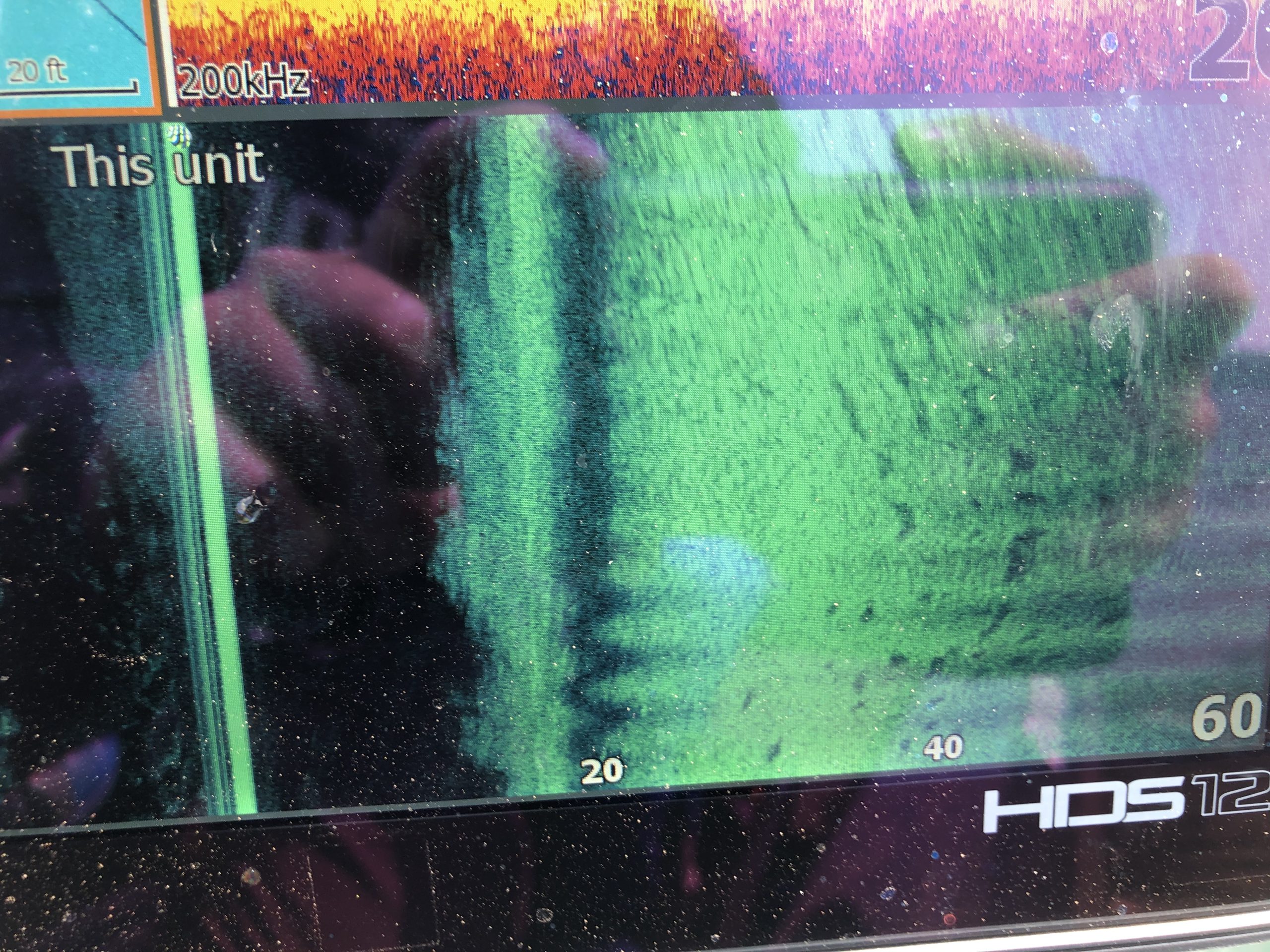
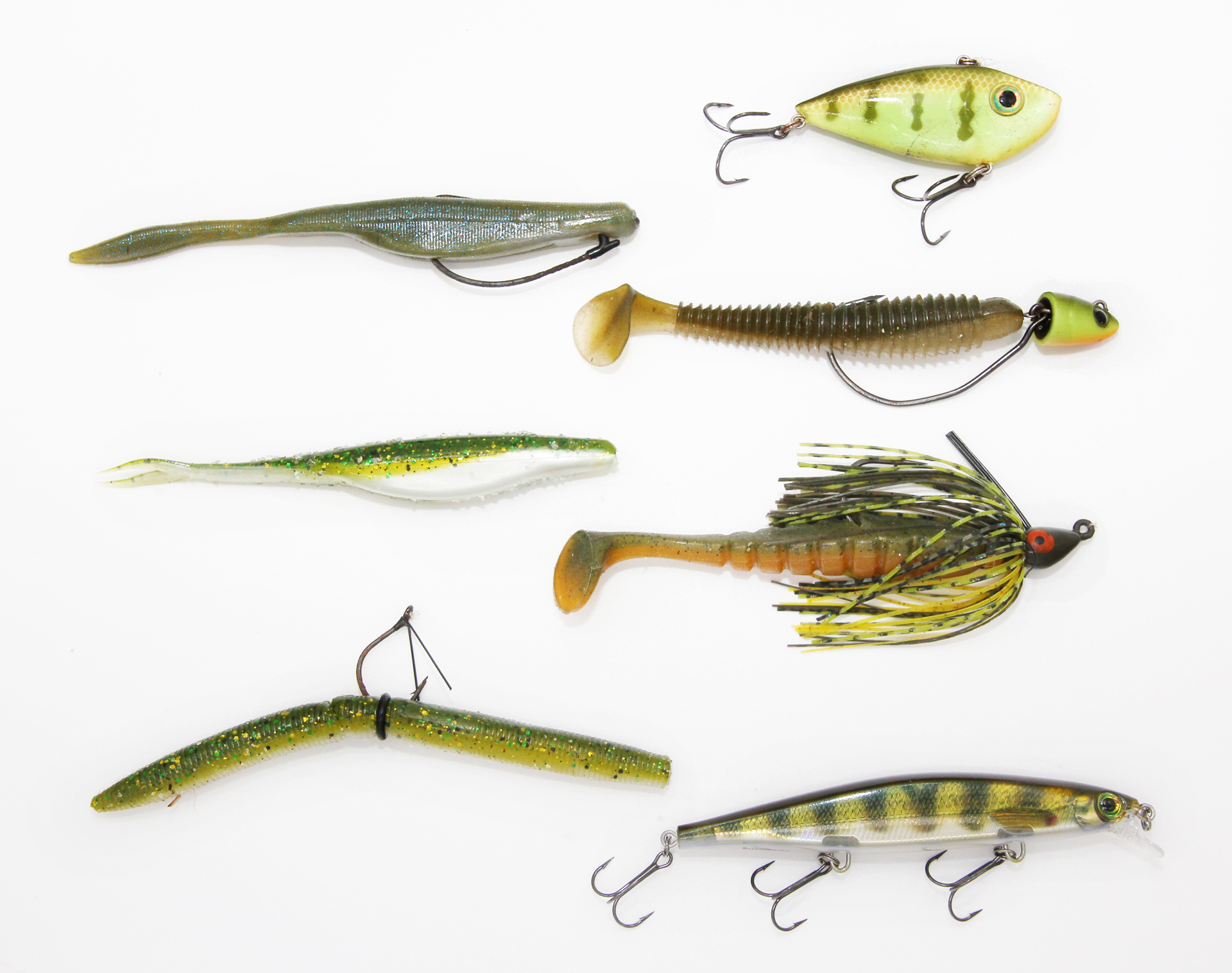
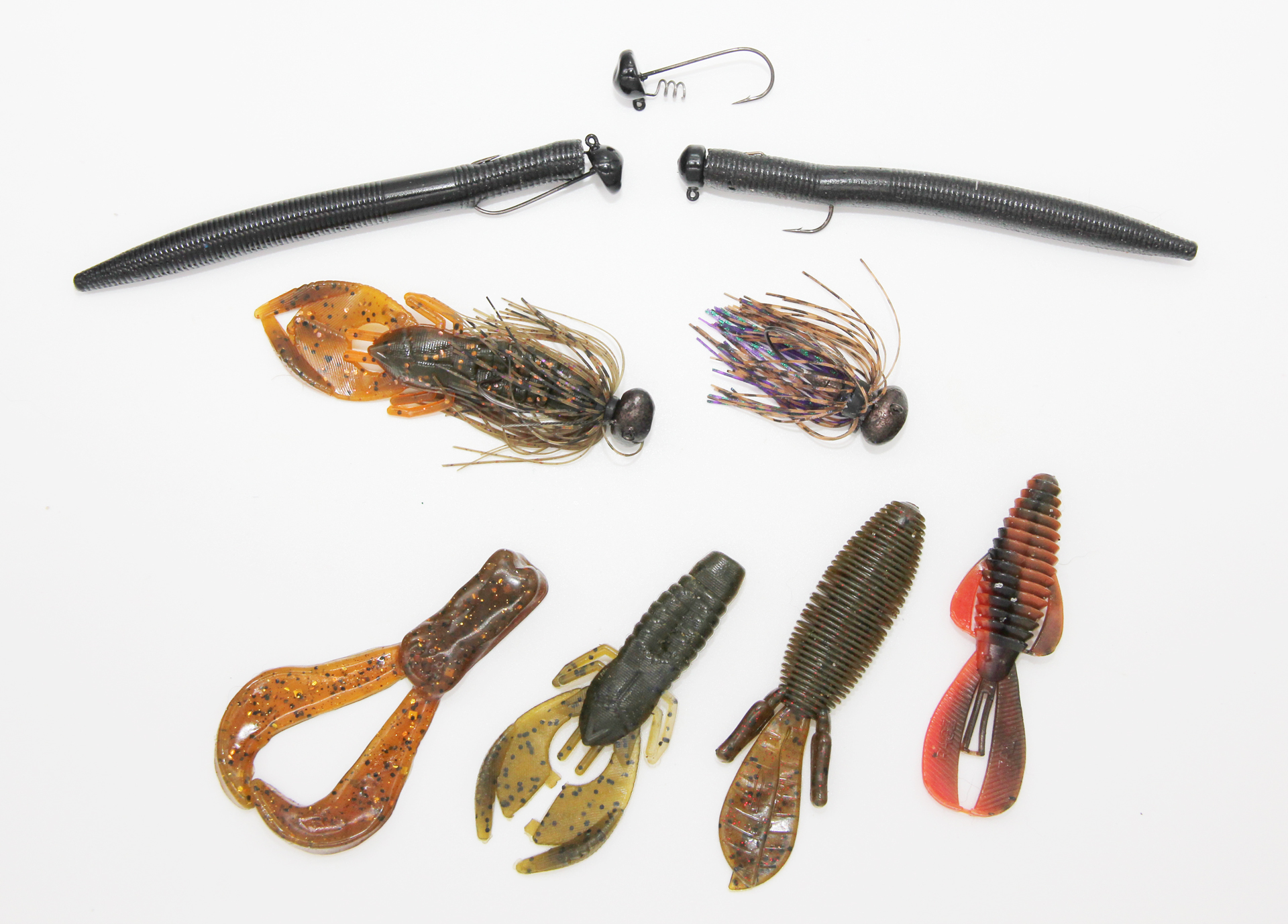
Probing through fish cribs requires utilizing side imaging, and the expectation that you will lose lures. They are frustrating to fish, requiring precise boat positioning with Spot-Lock and stealth to fish most effectively.
Drop-shot rigs with finesse worms are deadly. Many guide trips have been saved by customers subtly shaking them alongside and through structures. Preferred finesse worms are Kalin’s Weenie Worms, Zoom Finesse Worms, and Baby Slug-Gos. Tear-drop style weights are necessary, as they help make the rigs snag-resistant.
Ned rigs are popular, too, and can be more effective depending on style and rigging method. In cold fronts, I live and die by a custom-poured, 4-inch, solid black stick worm rigged on a weedless Ned head, fished as a bottom rig. Heavier 5/32-ounce sizes are used to maintain bottom contact. It is almost snag-proof. Deadstick, but keep pressure on the line to avoid deep hookings.
Likewise, power anglers have options for cribs, too. Personal favorites are dragging and deadsticking finesse football jigs with craw trailers. Jewel Baits’ PeeWee Football jigs in 3/16- and 5/16-ounce sizes are tremendous tools for probing through the edges of cribs. These finesse jigs accommodate smaller trailers that includes Strike King’s Baby Rage Craw and Baby Rage Bug, Missile Baits Baby D-Bombs, and beaver-style plastics.
Deeper structure—On lakes lacking shallower cover, smallmouths will slide into deeper water and the next nearest available underwater structure. They often situate along the slopes and base of drop-offs, atop rock piles, and on/in other bottom irregularities. On these waters, smallmouths tend to move to depths of 15 to 25 feet. When a depth change like this is involved, compression of their swim bladders occurs, causing smallmouths to temporarily lose their ability to swim upward.
While observing smallmouths underwater, and on my Lowrance HDS-Live units, it’s enlightening to observe how many inactive fish slowly swim along bottom or lay there doing nothing. Many of these fish are not worth targeting due to their inactivity and laziness. On deeper structures, however, they can respond to the slowest, bottom-oriented presentations possible.
Catching bottom-huggers requires patience, persistence and some wizardry with your rod and line to detect light strikes. Bites will not come easily and are rarely detected without some magic touch. Some of our trusted methods are drop-shot rigs, heavy Ned rigs, and tubes with 1/4-ounce jig inserts and an exposed hook. Maintaining bottom contact and deadsticking is of utmost importance. Otherwise, you’ll fail to catch these least-active smallmouths. You will become a frustrated angler pursuing these fish. Don’t quit on them prematurely!
If the lake is beyond featureless, sandgrass basins can provide smallmouths with sanctuary.
Rivers and flowages – Don’t neglect river systems and flowages. Their dark waters and currents can help mask the aftershocks and affects of cold fronts. On the worst days, these fisheries are the best options to be on with most fish species less affected.
I favor floating my local river systems where smallmouths remain active and aggressive. River smallmouths are capable of withstanding spring and fall season cold fronts. Floating rivers is a wise choice when lakes get pounded by strong northwest winds. Power fishing strategies and bottom fishing methods are effective.
Summer cold fronts aren’t as drastic as during spring and fall seasons, but they are beneficial for the cooldowns they produce. During summer months, most flowages are stagnant and too hot to fish. I avoid them altogether and don’t fish them unless a summer cold front quickly plummets water temperatures, reactivating the stagnant fishery. Smallmouths wake up to take advantage of these new feeding opportunities.
On these systems, smallmouths gravitate to cover and utilize it with the same frequency as lake fish. The only differences are their dark waters and currents that help alleviate their hangover, and the wealth of boulder, rock and wood habitats reduce their pouting and misbehavior.
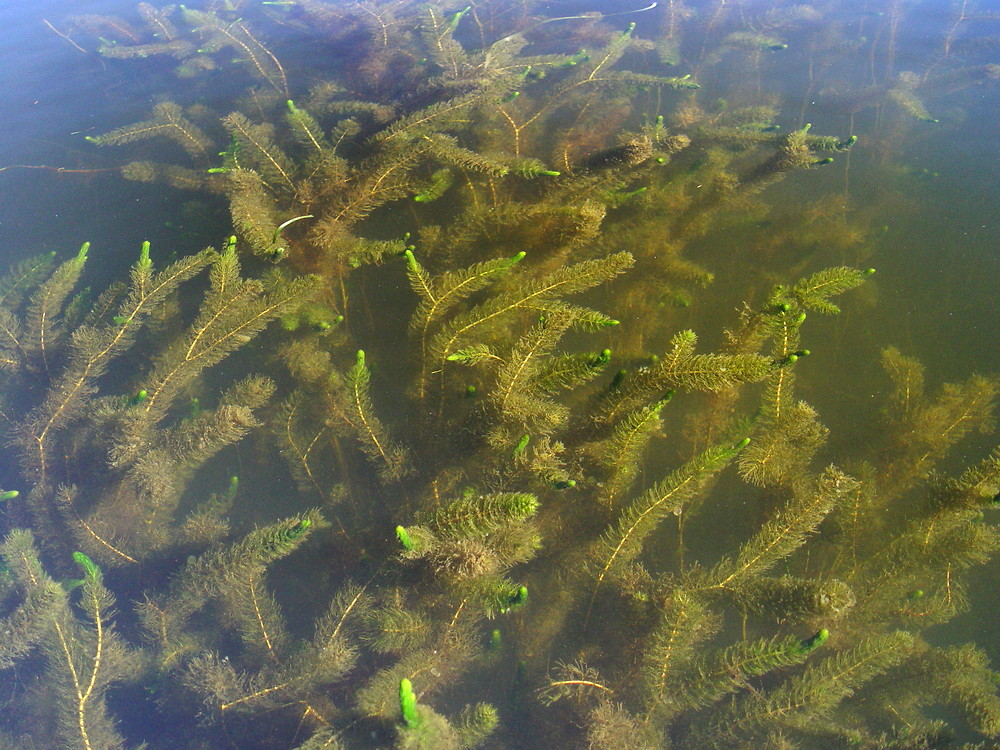
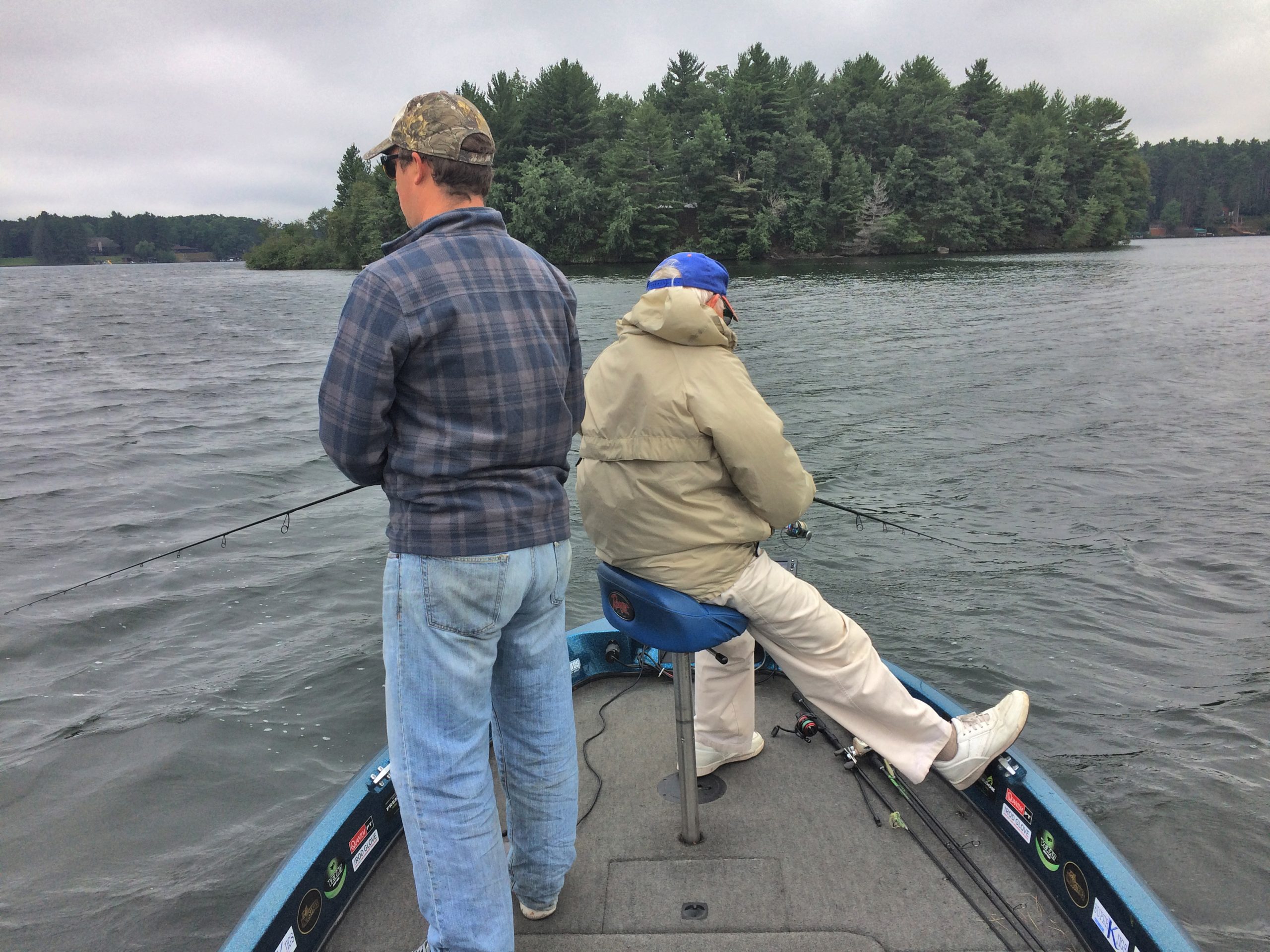
Conquering cold fronts
Undoubtedly, fishing slowly and methodically with patience, persistence and penetration into where they dwell is a winning strategy. Moreover, the identification of fish locations is necessary.
Every lake varies with habitat and cover availability, and its smallmouths alsovary in terms of behavior and personality. Dissect through everything the waters provide and explore all possibilities.
Tough days of fishing with conditions that are so bad are beyond our control. You could change lures or switch lakes all you want, but some days it won’t make any difference. It’s not us who are at fault.
On these days, you don’t suck at fishing. The fish suck at eating our baits.
And remember, the worst day of fishing is better than the best day at work. But what if fishing is someone’s work?
Guiding is a tough job…
MWO
SHARE THIS POST
Did you enjoy this post?
You can be among the first to get the latest info on where to go, what to use and how to use it!
Andrew Ragas
Andrew Ragas splits time between Chicago and Wisconsin’s Northwoods. Based in Minocqua, Wis., he specializes in trophy bass fishing and offers guided trips from May through October. While big bass are his passion, he dabbles in multispecies, as well. He may be visited online at northwoodsbass.com
